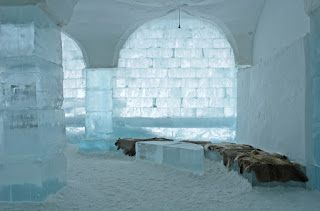
Big Four Ice Caves, Washington, U.S.
Reaching the caves—which exist year-round as part of the Big Four Mountain, spiking to 6,180-foot elevation at the top—is a hike all ages and most abilities can do, via the 2.2-mile Big Four Ice Caves Trail in the Mount Baker-Snoqualme National Forest. Fun fact: At an elevation of approximately 2,000 feet, the caves are near the lowest-elevation glacier in the lower 49 states (Alaska excluded).
Jökulsárlón Glacier Lagoon, Jökulsárlón, Iceland
Iceland is a hot destination these days and that includes the other end of the mercury stick. Jökulsárlón Glacier Lagoon—230 miles east of Reykjavík and on Iceland’s deepest lake—is best reached on a boat tour, offered between May and October.
Mainland Ice Caves, Wisconsin, U.S.
The catch here is that the ice caves on Lake Superior, part of the Apostle Islands National Lakeshore, only exist in February and March if outdoor temperatures fall to a certain level, but in recent years they have. The best tactic is to consult the park’s Facebook page for up-to-date conditions or calling the Ice Line (the number is on the park’s page).
Bâlea Lac Ice Hotel, Romania
Been craving a jaunt to Eastern Europe? Maybe the notion of bunking on a block of ice for the night, draped in a fur throw, will entice you further. Rebuilt each winter from scratch, using ice from Bâlea Lake, a bar, restaurant and 12 hotel rooms come to life, with bookings starting in late December. Did we mention the hotel’s Ice Church where people host weddings and baptisms?
Niagara Falls, U.S. and Canadian Border
Most people visit Niagara Falls—a trio of waterfalls in a state parkstraddling both the U.S. and Canadian borders—during the summer, but wintertime is just as beautiful (and the region’s ice wines a treat). While the falls don’t actually freeze, what looks like icicles and ice formations appear.
Mer de Glace, Chamonix Valley, France
In French, Mer de Glace means “sea of glass,” an accurate translation for France’s largest glacier—an hour’s drive southeast of Geneva in the French Alps—which stretches about 4.5 miles in length. It can be reached via a cable car departing from Gare du Montenvers in Chamonix.
Valdez Glacier, Alaska, U.S.
While May to September is the best time to view the Valdez Glacier, winter is when you get the true Alaska experience (read: frigid climate, with heavy snow and ice climbing as a sport). During the Gold Rush of 1898, folks traveled over the glacier to reach the interior portions of Alaska. Consider booking a trip with a guide; many operate out of Valdez.
Icehotel, Jukkasjärvi, Sweden
Since 1990, Icehotel has booked visitors each winter, but not until 2016 was it open year-round. Each cold room—“warm rooms” lack ice—is a work of art. (Case in point: A juried group of artists from around the world go to town on ice sculptures in the Art Suite.) If you’d rather not sleep on a block of ice bundled in reindeer skin, day visits are also offered.
Athabasca Glacier, Alberta, Canada
Located in the Canadian Rockies, within Jasper National Park, this is North America’s most visited glacier, in part due to its easy access. During winter, you can get close to the glacier, especially if you book a round-trip on the Ice Explorer, an all-terrain vehicle that drives right onto the ice. The nearby Glacier Skywalk is just like what it sounds: a walkway with a glass platform that’s the next best thing to being on top of the glacier.









Comments
Post a Comment